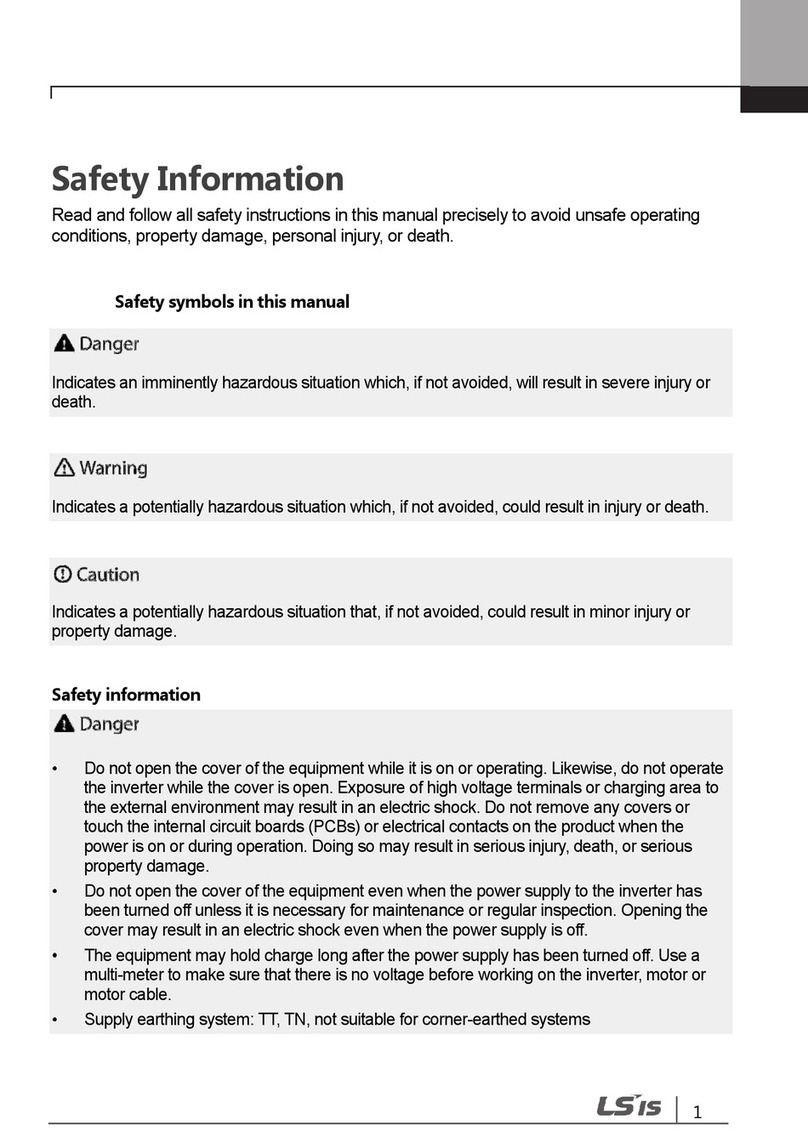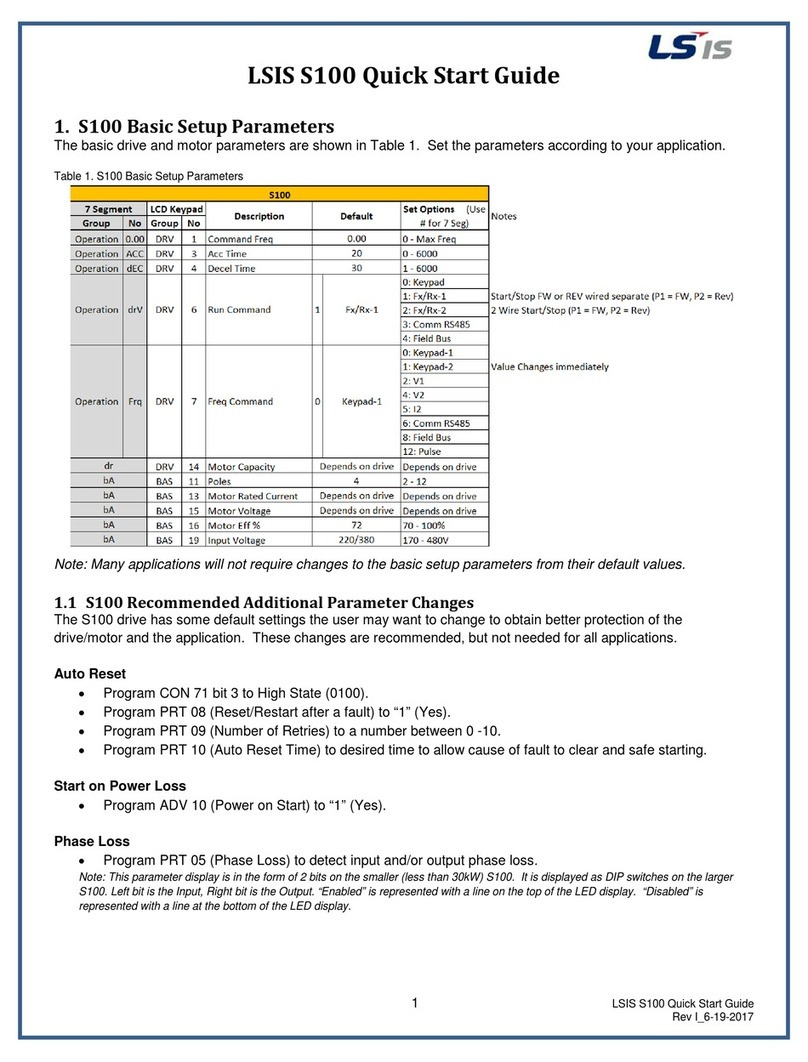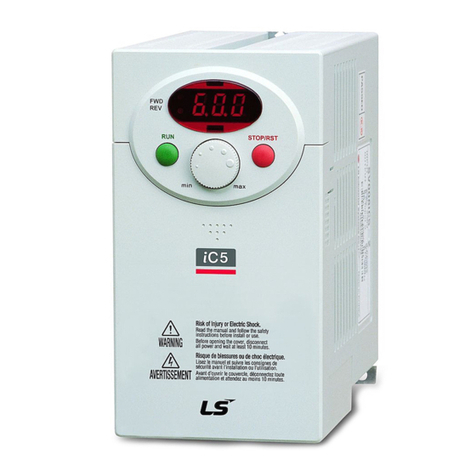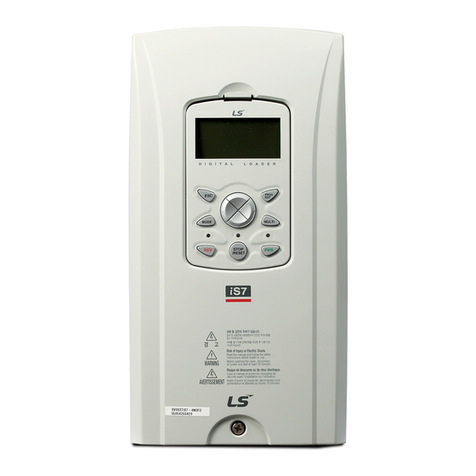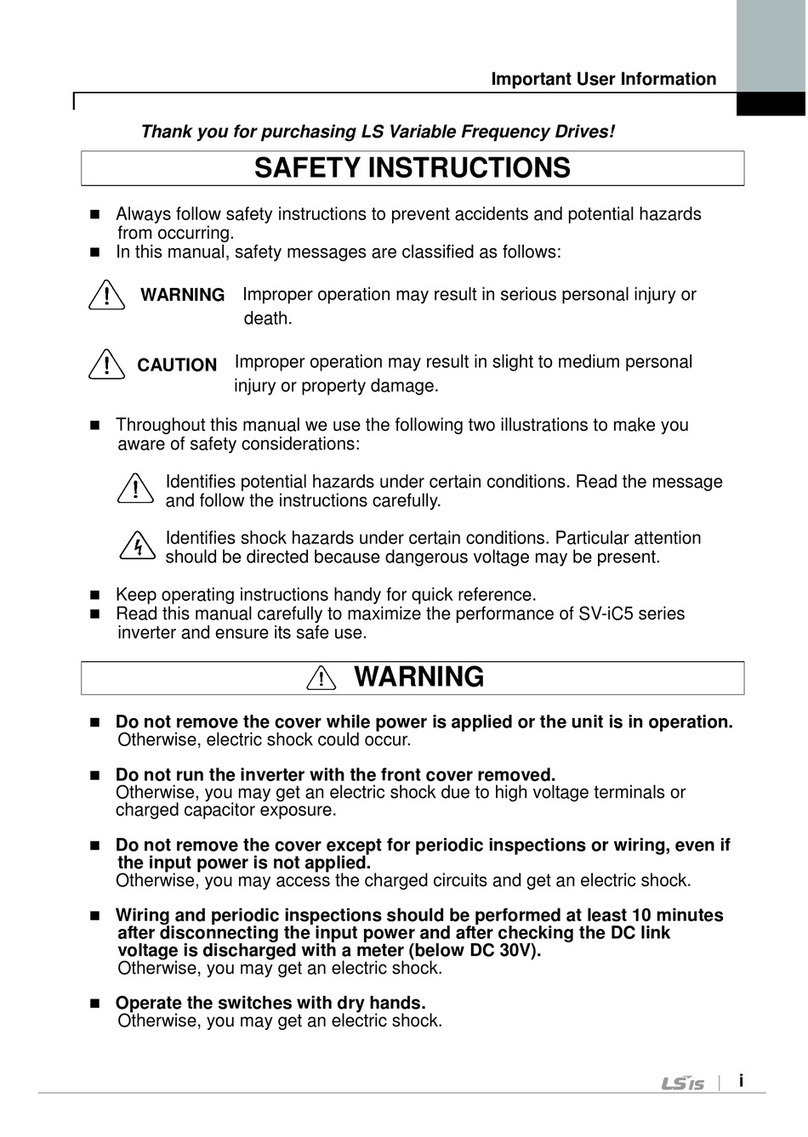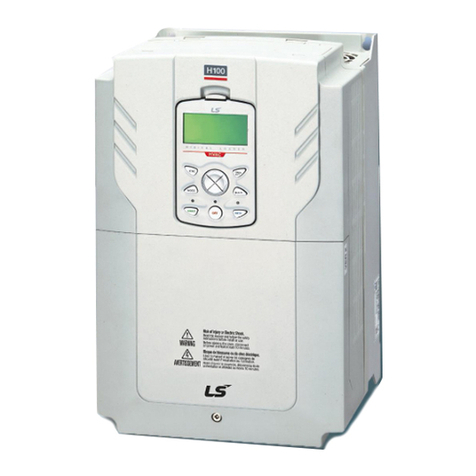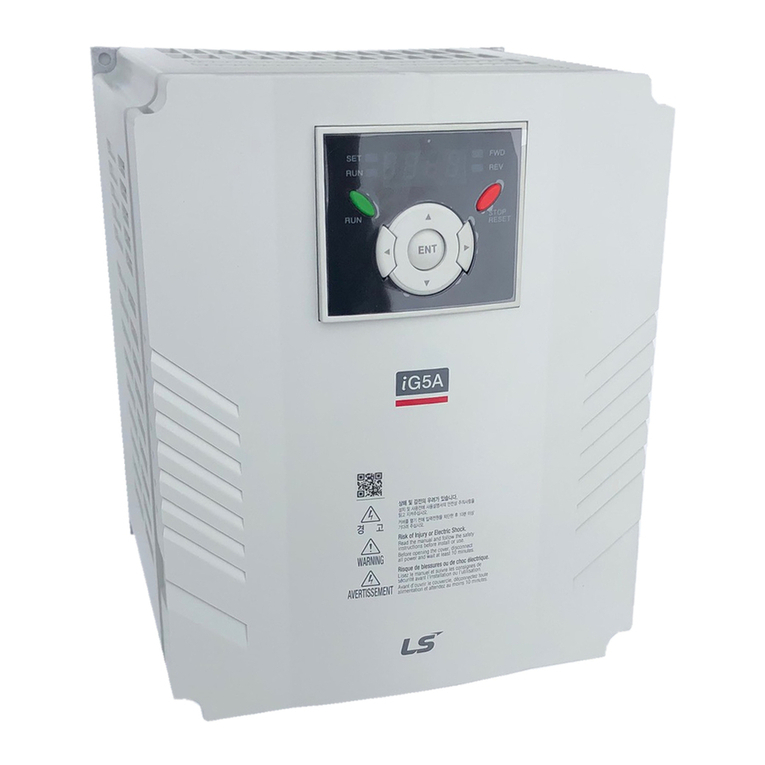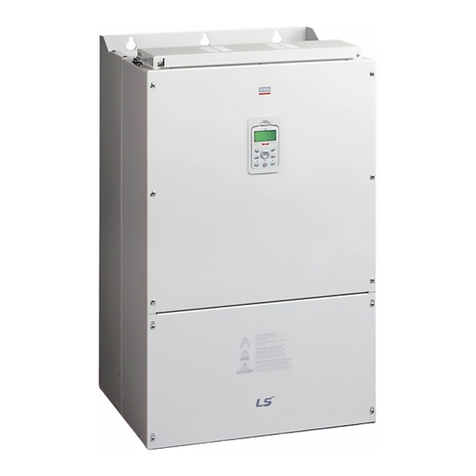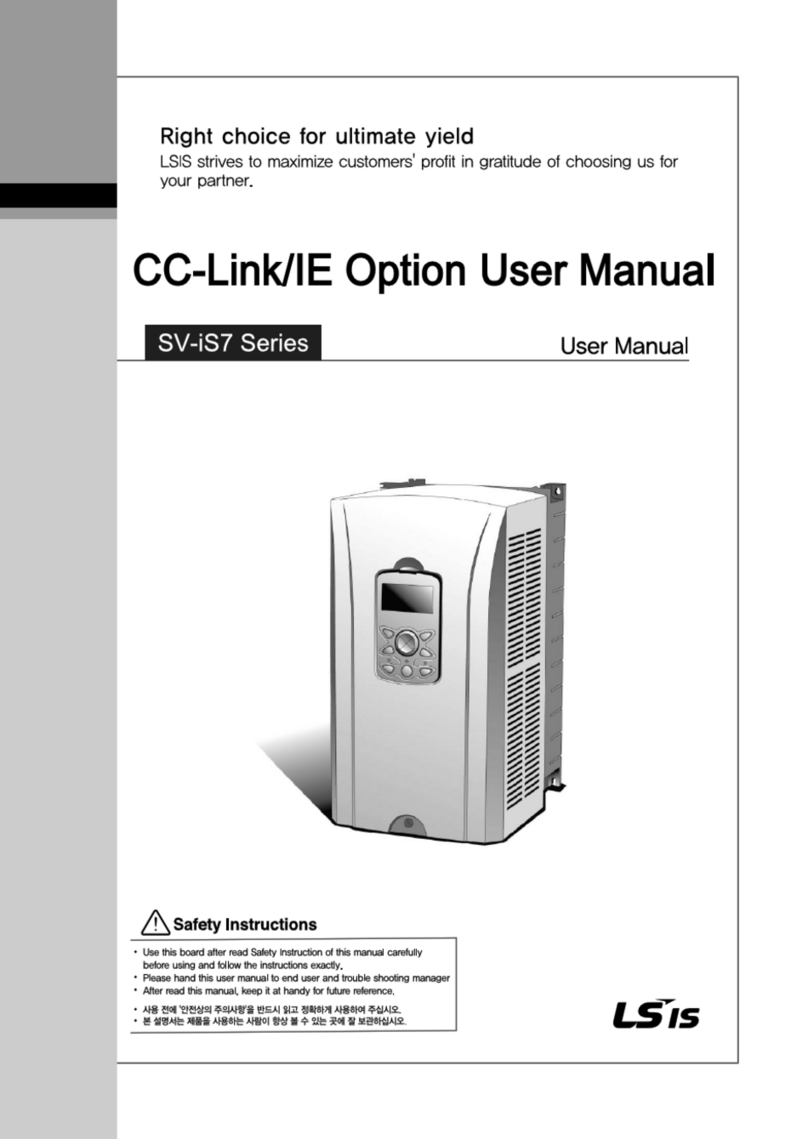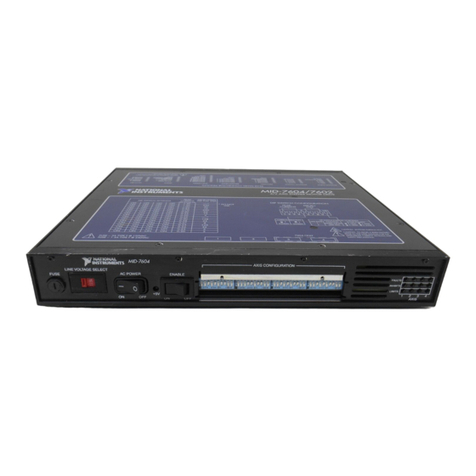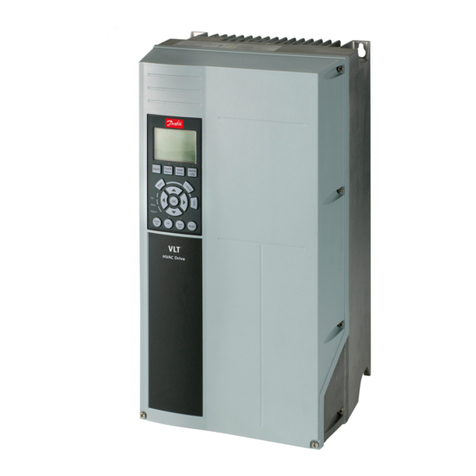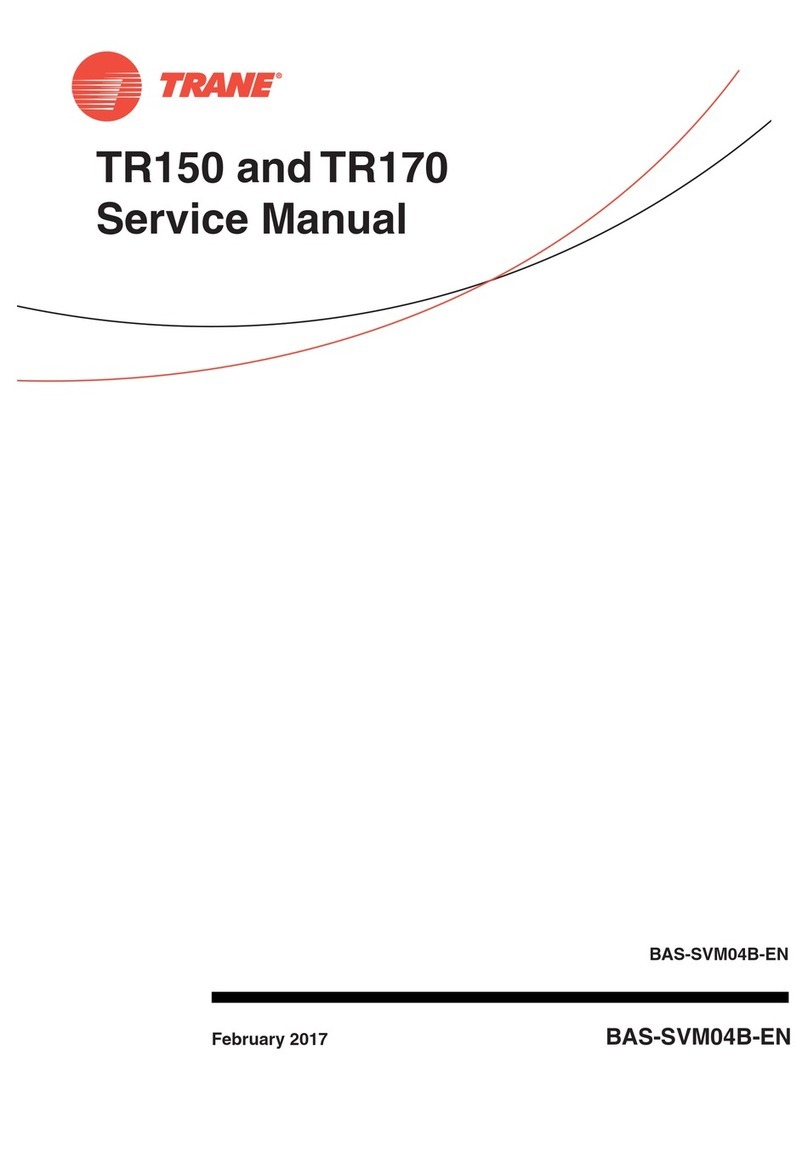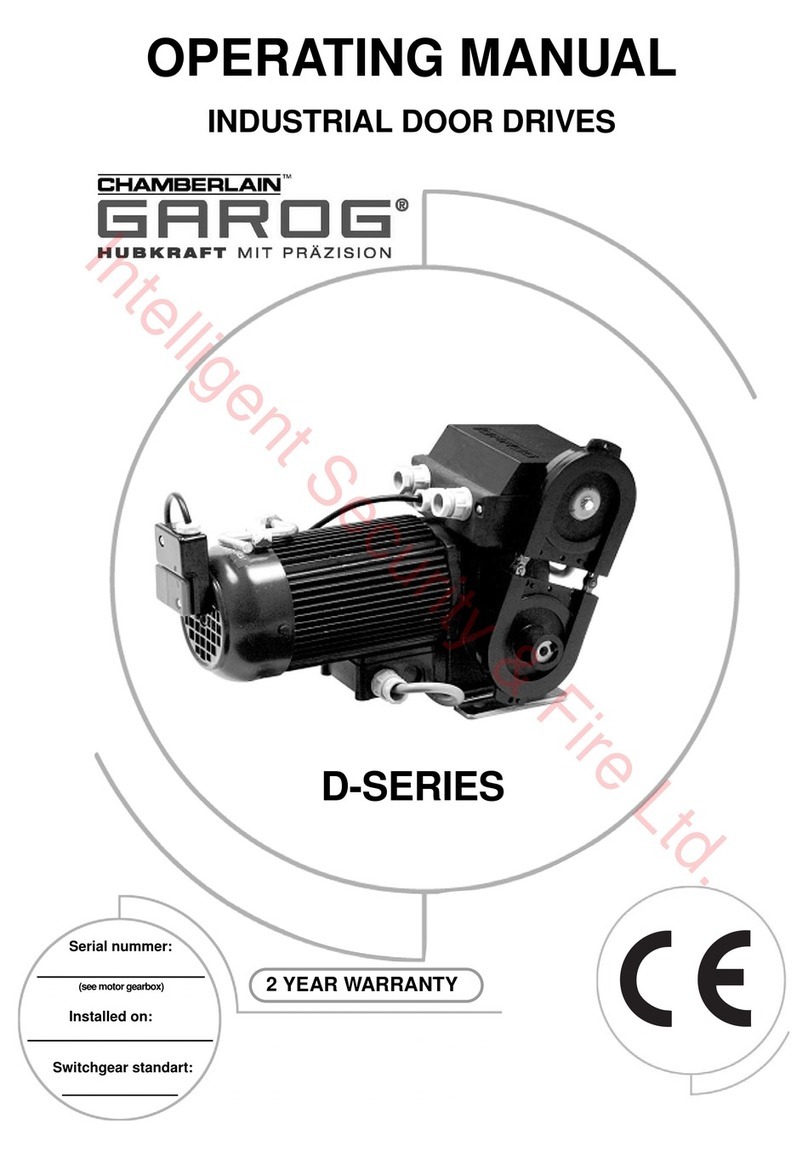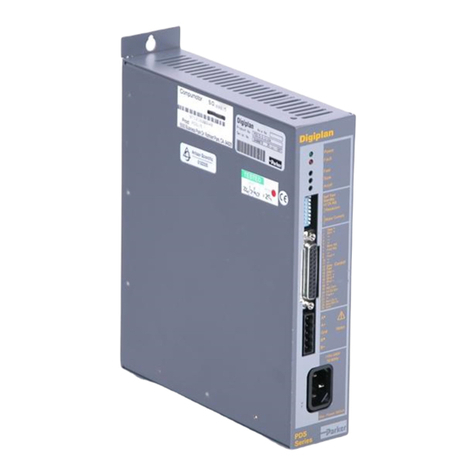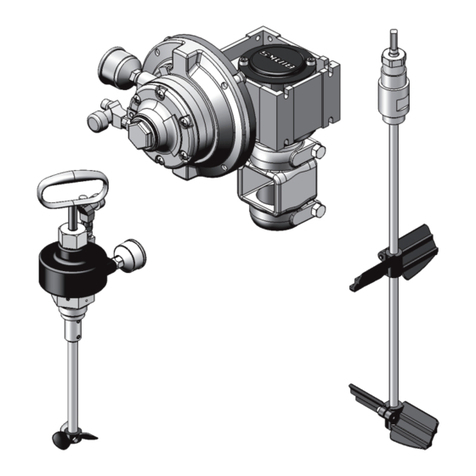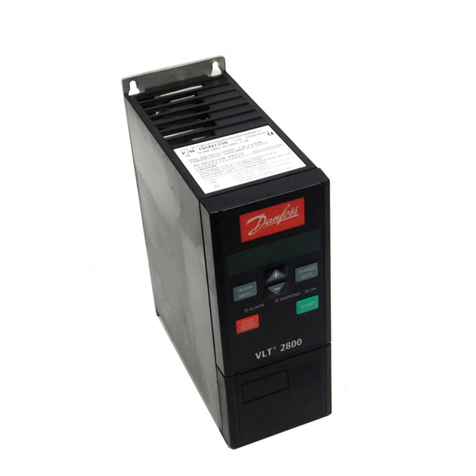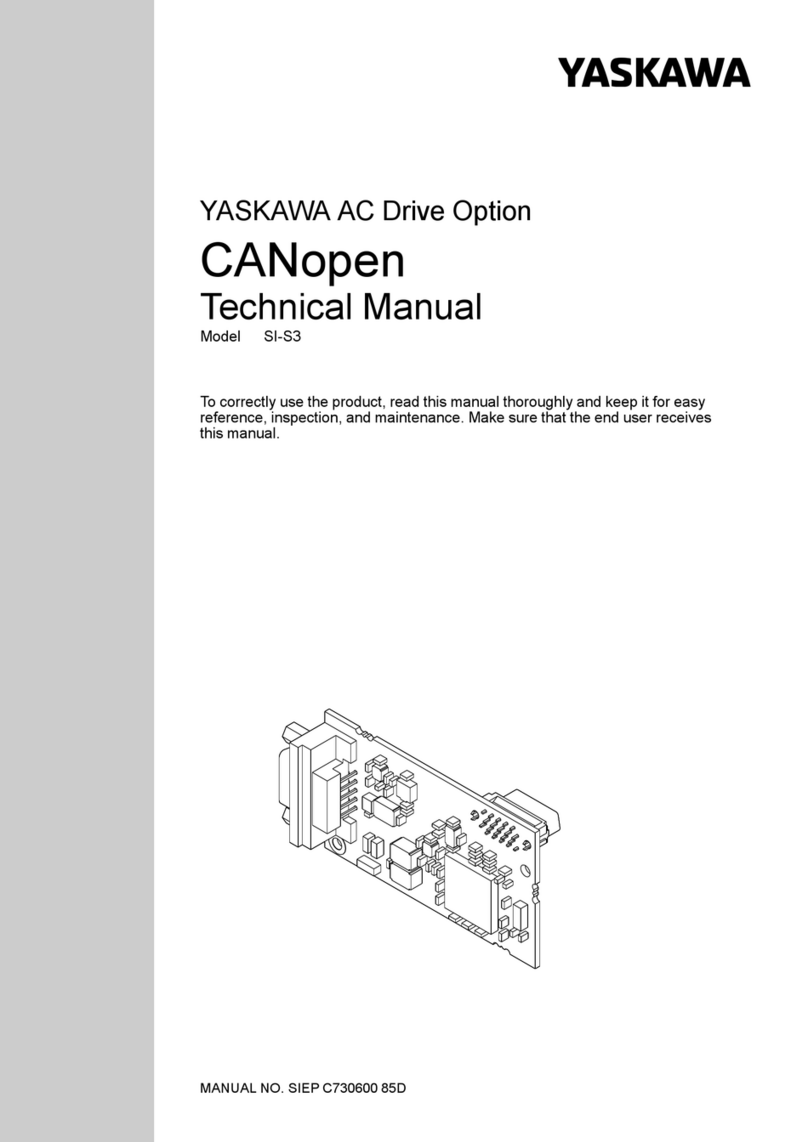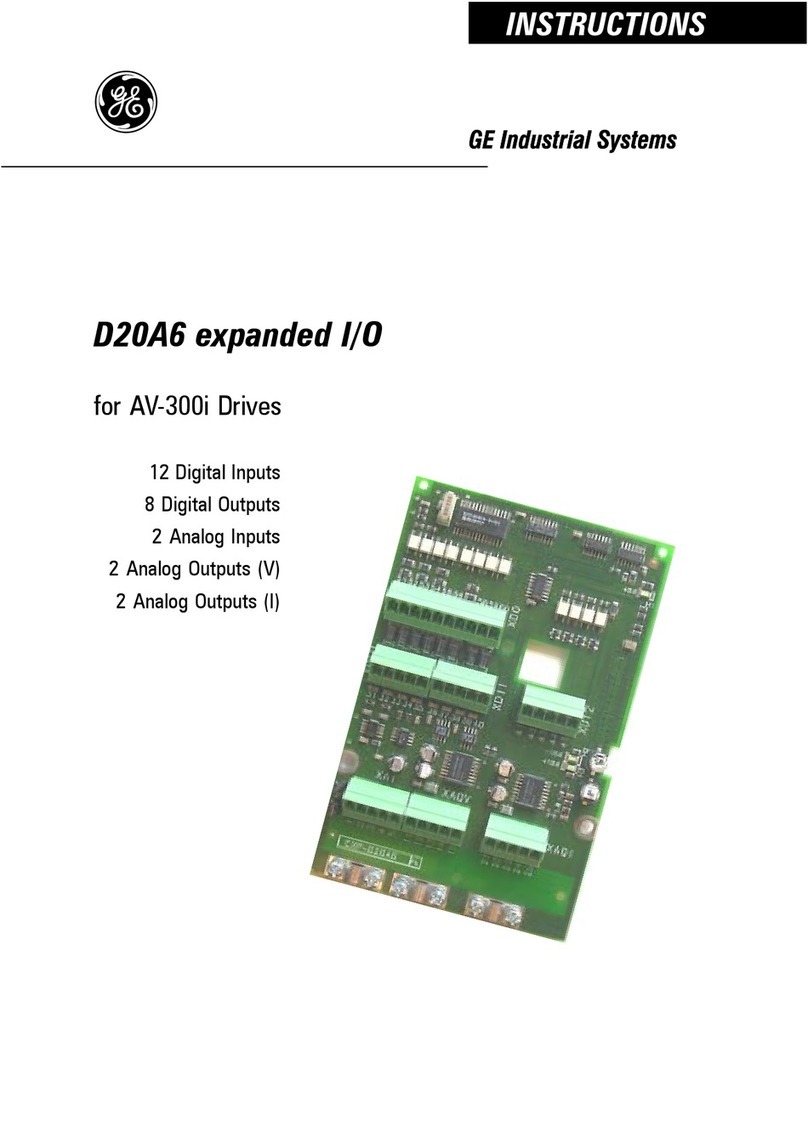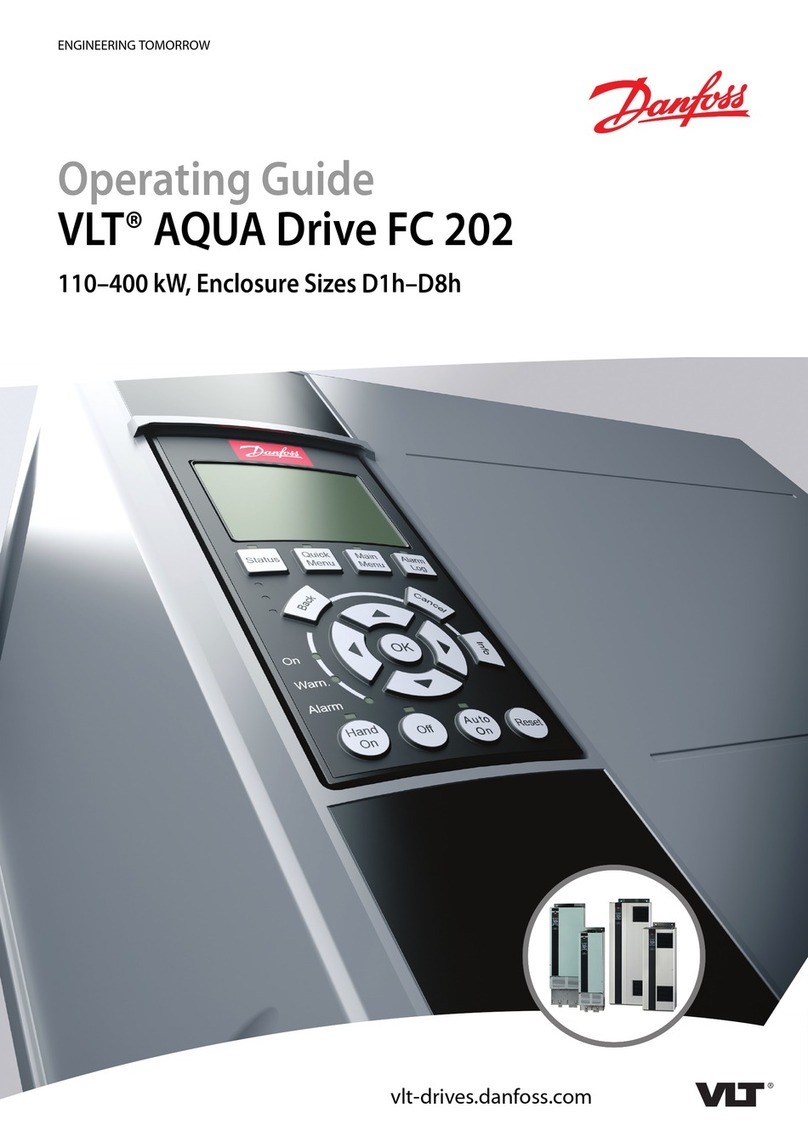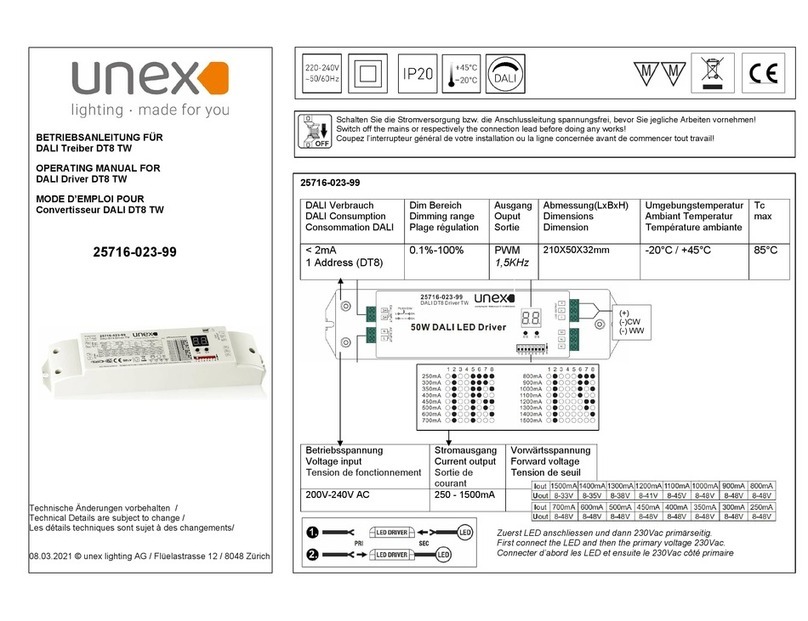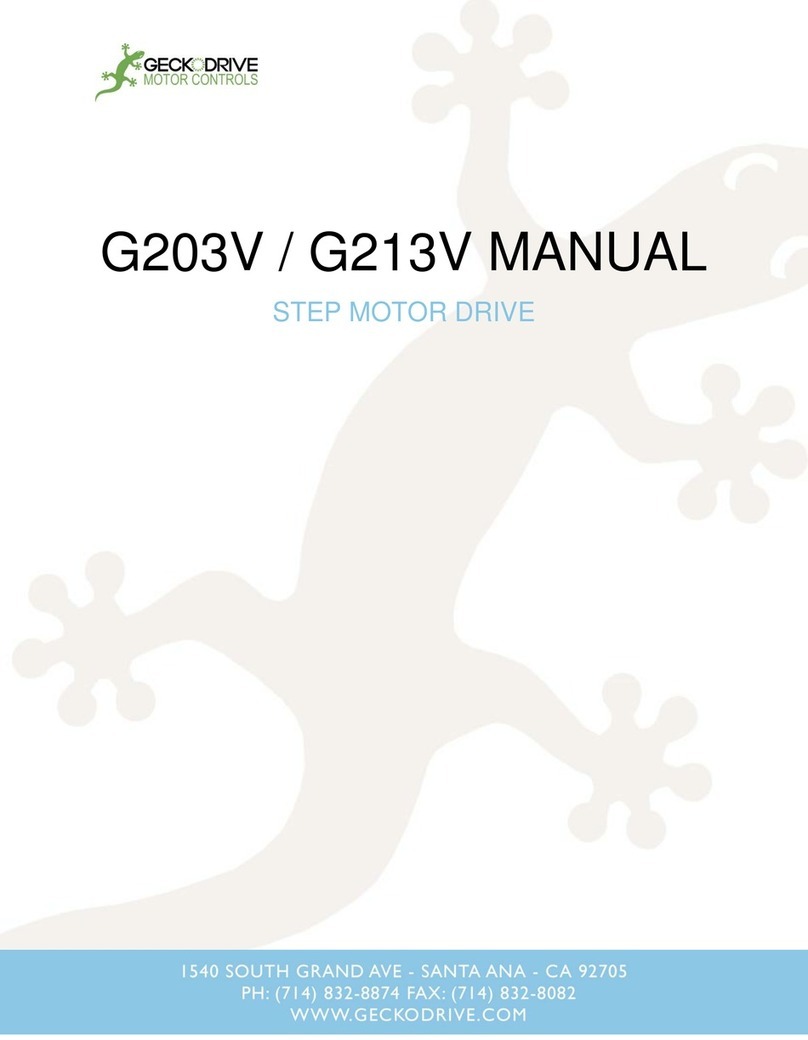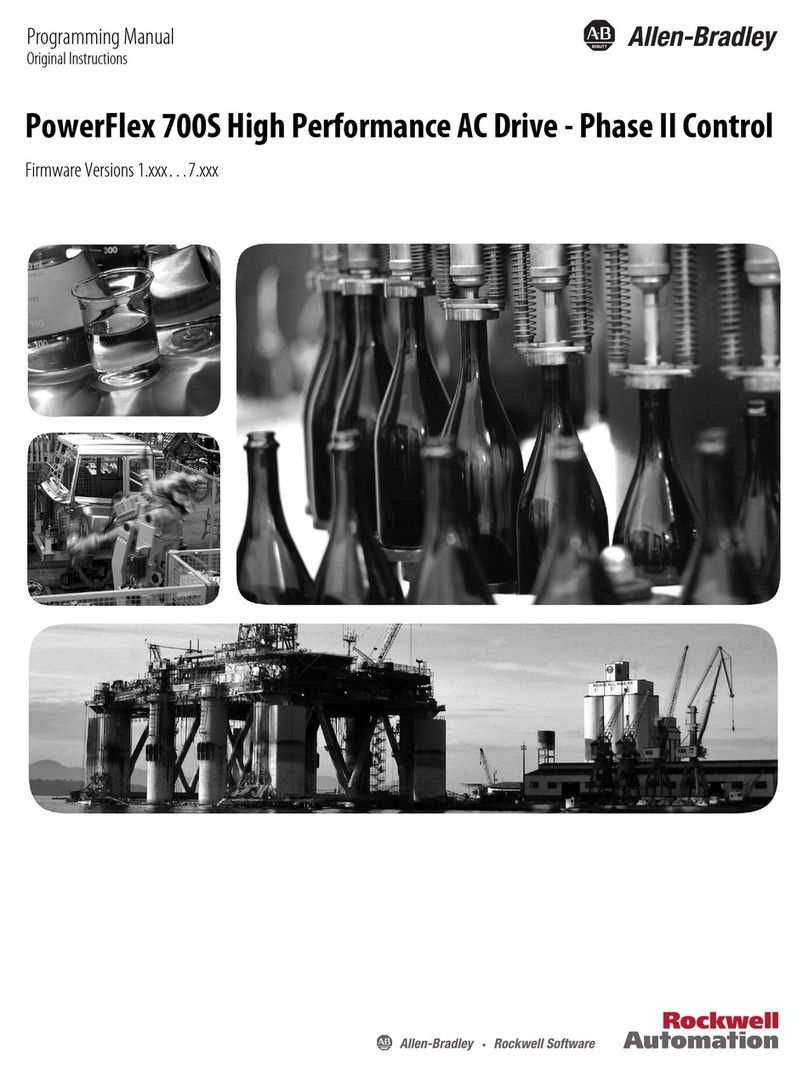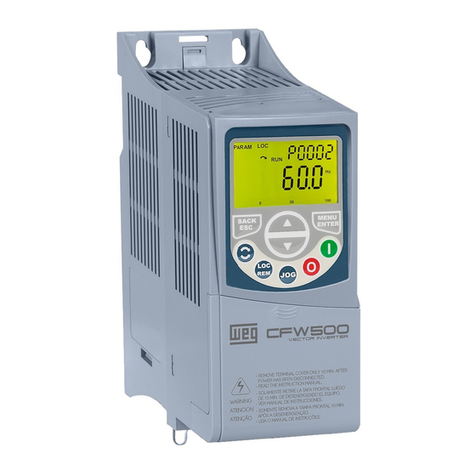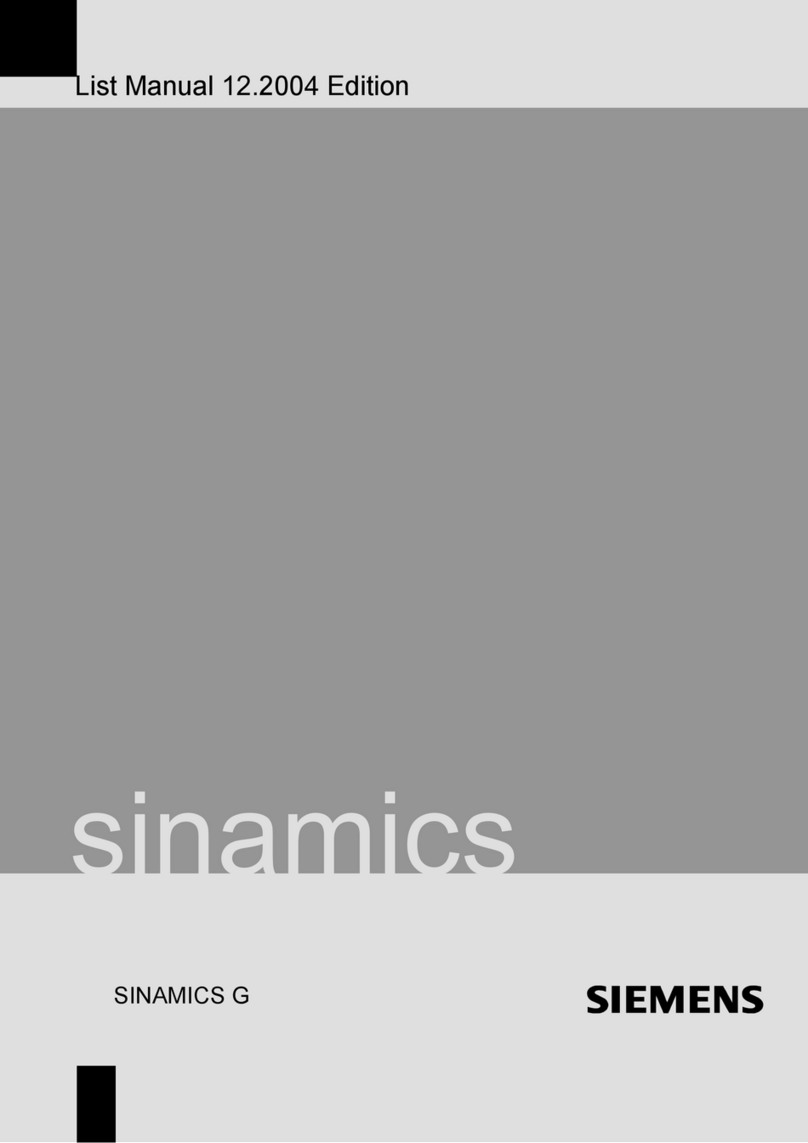
Troubleshooting Fault Trips
Item Type Cause Remedy
OLT Latch The load is greater than the motor’s rated capacity.
Replace the motor and inverter with models that have increased capacity.
The set value for the overload trip level (Pr.21) is too low. Increase the set value for the overload trip level.
OCT Latch
Acc/Dec time is too short, compared to load inertia (GD2).
Increase Acc/Dec times.
The inverter load is greater than the rated capacity.
Replace the inverter with a model that has increased capacity.
The inverter supplied an output while the motor was idling. Operate the inverter after the motor has stopped or use the
speed search function (Cn.60).
The mechanical brake of the motor is operating too fast. Check the mechanical brake.
A ground fault has occurred in the inverter output wiring.
Check the output wiring.
The motor insulation is damaged. Replace the motor.
OVT Latch
Deceleration time is too short for the load inertia (GD2). Increase Deceleration time.
A generative load occurs at the inverter output. Use the braking unit.
The input voltage is too high. Determine if the input voltage is above the specified value.
A ground fault has occurred in the inverter output wiring. Check the output wiring.
The motor insulation is damaged.
Replace the motor.
LVT Level
The input voltage is too low.
Determine if the input voltage is below the specified value.
A load greater than the power capacity is
connected to the system
(e.g., a welder, direct motor connection, etc.). Increase the power capacity.
The magnetic contactor connected to the power
source has a faulty connection. Replace the magnetic contactor.
GFT Latch A ground fault has occurred in the inverter output wiring.
Check the output wiring.
The motor insulation is damaged. Replace the motor.
ETH Latch
The motor has overheated. Reduce the load or operation frequency.
The inverter load is greater than the rated capacity.
Replace the inverter with a model that has increased capacity.
The set value for electronic thermal protection is too low. Set an appropriate electronic thermal level.
The inverter has been operated at low speed for an
extended duration.
Replace the motor with a model that supplies extra power
to the cooling fan.
POT Latch
The magnetic contactor on the output side has a connection
fault. Check the magnetic contactor on the output side.
The output wiring is faulty. Check the output wiring.
IPO Latch
The magnetic contactor on the input side has a connection
fault. Check the magnetic contactor on the input side.
The input wiring is faulty. Check the input wiring.
The DC link capacitor needs to be replaced. Replace the DC link capacitor. Contact the retailer or the
LSIS customer service center.
OHT Latch
There is a problem with the cooling system. Determine if a foreign object is obstructing the air inlet,
outlet, or vent.
The inverter cooling fan has been operated for an extended
period. Replace the cooling fan.
The ambient temperature is too high. Keep the ambient temperature below 50℃.
NTC Latch The ambient temperature is too low. Keep the ambient temperature above -10℃.
There is a fault with the internal temperature sensor. Contact the retailer or the LSIS customer service center.
FAN Latch A foreign object is obstructing the fan’s air vent. Remove the foreign object from the air inlet or outlet.
The cooling fan needs to be replaced. Replace the cooling fan.
*Level: Automatically terminates when the failure is solved. This is not saved in the fault history.
*Latch: Terminates when the reset signals are input after the fault is solved.
ⓒ 2019. 05 LSIS Co.,Ltd. All rights reserved. / (01) 2019. 05 Human Power
2019. 05
■ Head Quarter
LS Yongsan Tower, 92, Hangang-daero, Yongsan-gu, Seoul, 04386, Korea Tel: 82-2-2034-4286 E-mail : PLCSales@lsis.com
Installation Quick Guide
